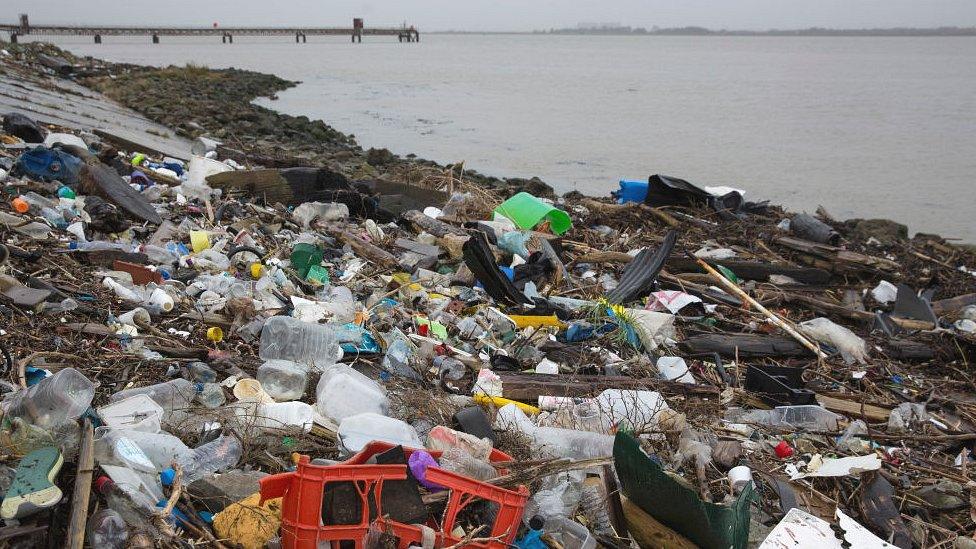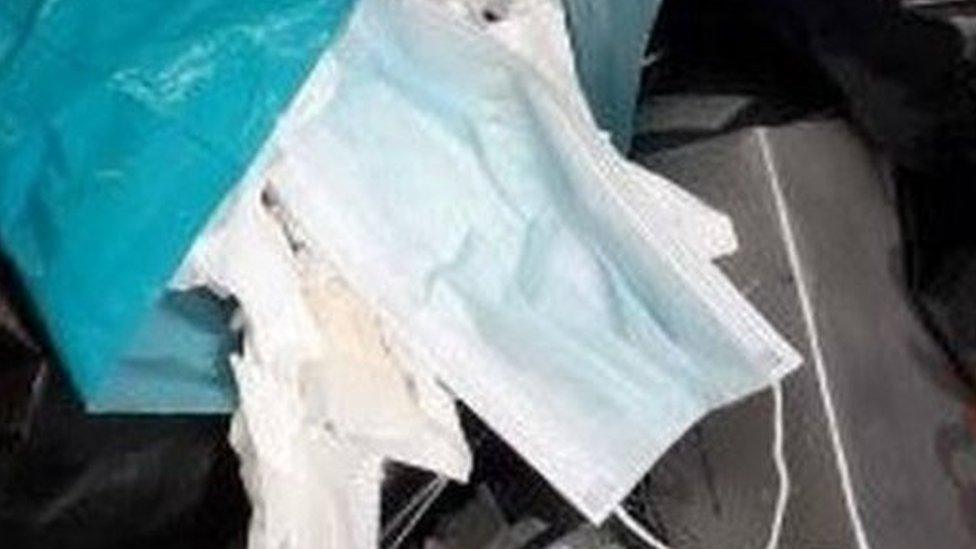Microplastics and pollution: River Thames crabs found 'full of plastic'
- Published
- comments

Plastic lining the shore at the Thames Estuary in Kent
London's River Thames is "severely polluted with plastic" which is threatening wildlife, according to the scientists who have carried out new research.
They have discovered the river is getting cleaner and some pollutants are reducing - but at the same time it now has some of the highest recorded levels of microplastics for any river in the world.
Researchers estimate that 94,000 tiny pieces of plastic - called microplastics - flow down the river every second in some places.
The tiny bits of plastic have been found inside the bodies of creatures living in the river.
The plastics found in the river are thought to come from lots of places.
For example, water from washing machines finds its way into the river and contains extremely small fibres from clothes; plastics contained in sewage also wash into the water; and parts of larger bits of plastic, such as bottles and packaging items, get washed into the river too.
The researchers think plastic gloves and masks used by people during the coronavirus pandemic could make the problem worse.
Royal Holloway, University of London, carried out the study working closely with the Natural History Museum and Zoological Society, London.
Microplastics are small pieces of plastic that are less than 5mm in length.
Microplastics happen when bigger bits of plastic - such as bottles, bags and containers break down in soil or in the sea and pollute the environment.
Glitter is also a microplastic.
Some plastics are so tiny they can't even be seen with the naked eye. They are called nanoplastics.

Discarded face masks
Dr Paul Clark of the Natural History Museum said: "What our students have shown is that although the Thames is certainly cleaner with regards some chemical pollutants, it is severely polluted with plastic. And once again our wildlife is threatened."
Crabs contained tangled plastic in their stomachs, and study researcher, Alex McGoran said: "Upon bringing these crabs back to the labs at Natural History Museum, it was shocking to find that they were full of plastic."
According to the research, the Thames has higher quantities of microplastics than levels recorded in the Rhine in Germany, the Danube in Romania, the River Po in Italy and the Chicago River in the US.
What can be done about microplastics in our water?
Researchers now want people to think more about the plastic they use and what they throw away.
They also want products to have better labelling, to show people how much plastic they contain.
"People can make much more of a difference than they might think," said Katharine Rowley of Royal Holloway.
- Published4 October 2019

- Published21 July 2020

- Published21 July 2020

